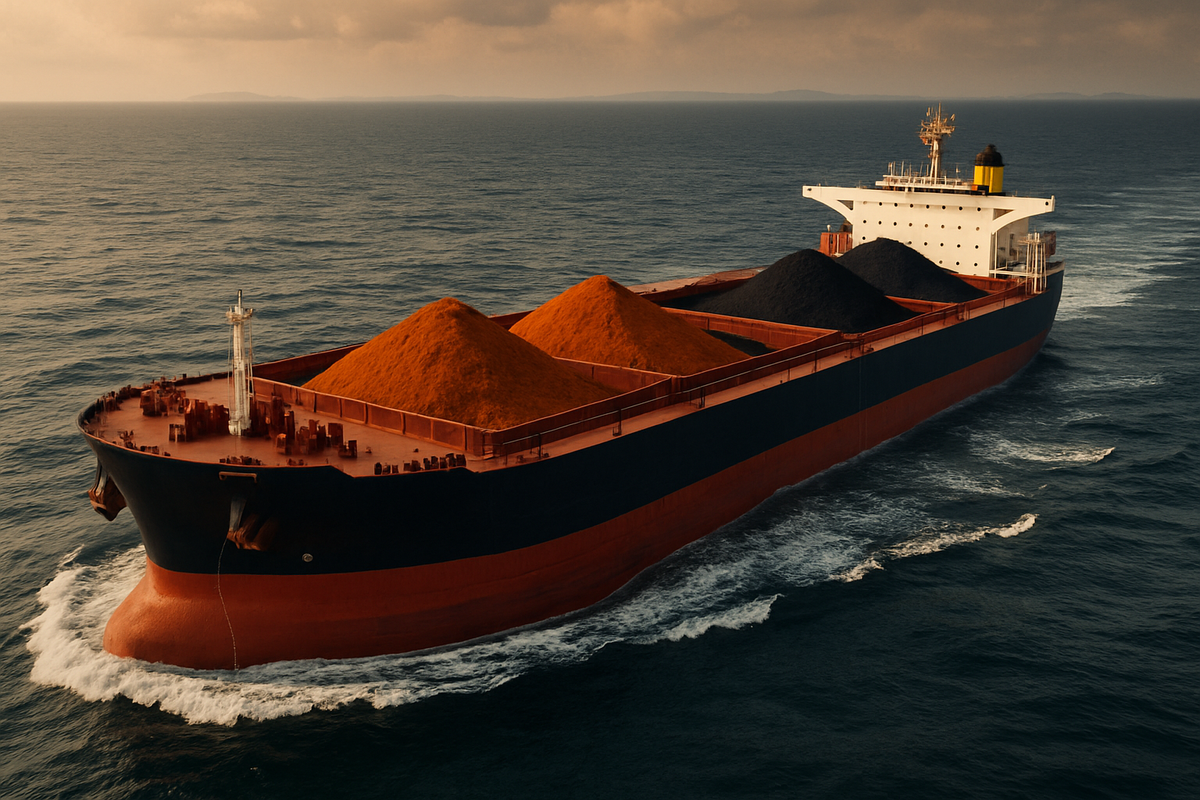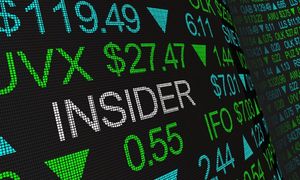
The global bulk shipping market is currently experiencing a period of significant dynamism, with Capesize vessel rates showing a robust strengthening, primarily driven by persistent demand for iron ore. This uptick, while subject to recent volatility influenced by geopolitical factors and new port fees, signals a complex interplay of forces shaping international trade in raw materials. As of October 2025, the Baltic Dry Index (BDI) stands notably higher than a year ago, reflecting a generally healthier market, even as the coal trade faces a projected contraction.
The immediate implications of these strengthening rates are multi-faceted, ranging from increased operational costs for shipping firms due to new levies imposed by major economies, to a potential tightening of vessel availability. While the robust demand for iron ore from key importing nations like China provides a positive signal for global economic activity, the contrasting outlook for coal highlights a broader energy transition at play. This scenario presents both opportunities and challenges for stakeholders across the shipping, mining, and commodity trading sectors.
Capesize Market Navigates Volatility Amidst Strong Iron Ore Flows and New Trade Barriers
The Capesize segment of the dry bulk shipping market has been a focal point of activity in October 2025, demonstrating considerable fluctuation but maintaining a generally upward trajectory on a year-over-year basis. The Capesize index, which recorded a one-week high of 3,128 points on October 20, 2025, reflects average daily earnings for these large vessels often exceeding $25,000. This strength is largely underpinned by the consistent and significant movement of iron ore, particularly from major exporters Australia and Brazil, to the world's largest importer, China.
However, this positive trend has not been without its challenges. Earlier in October, Capesize rates experienced sharp declines, attributed significantly to the imposition of new port fees by both the United States and China on international shipping firms. These retaliatory measures have introduced turbulence, increased operational costs, and amplified volatility in freight sentiment, forcing vessels linked to one nation to potentially avoid cargoes from the other. This dynamic is expected to tighten the effective availability of tonnage, providing a floor to freight rates even amidst demand fluctuations. Geopolitical tensions, such as a temporary dispute between China Mineral Resources Group and BHP Mining (ASX: BHP) in early October, also contributed to rate dips, underscoring the sensitivity of the market to international relations.
The timeline leading up to this moment has seen a gradual recovery in bulk shipping following pandemic-era disruptions and subsequent economic uncertainties. While 2024 saw a cautious rebound, 2025 has brought renewed vigor, particularly for Capesize vessels, as global supply chains adapted and major economies sought raw materials. Key players involved include major mining houses such as Vale (NYSE: VALE), Rio Tinto (ASX: RIO), and BHP Mining (ASX: BHP), who are the primary generators of iron ore cargo, as well as significant charterers and shipowners like Golden Ocean Group (NASDAQ: GOGL) and Star Bulk Carriers (NASDAQ: SBLK). Initial market reactions have been mixed, with shipping stocks showing resilience despite the volatility, as the underlying demand for iron ore provides a bullish counterpoint to geopolitical headwinds.
Companies Poised to Win or Lose in a Shifting Bulk Shipping Landscape
The strengthening of Capesize rates and the evolving dynamics of iron ore and coal demand will inevitably create distinct winners and losers across the financial markets. Shipping companies with significant Capesize fleets are arguably the primary beneficiaries. Firms like Golden Ocean Group (NASDAQ: GOGL), Star Bulk Carriers (NASDAQ: SBLK), and Pacific Basin Shipping (HKG: 2343), which operate substantial Capesize vessels, stand to gain from higher charter rates and improved profitability. Increased daily earnings directly translate to stronger revenues and potentially higher dividends for shareholders, assuming operational costs remain manageable. The limited net growth projected for the Capesize fleet in the coming years (1.5% in 2025 and 1.9% in 2026) due to high newbuilding prices and regulatory uncertainties further supports existing fleet owners, as supply constraints help maintain rate strength.
On the commodity supplier side, major iron ore miners such as Vale (NYSE: VALE), Rio Tinto (ASX: RIO), and BHP Mining (ASX: BHP) will see their primary export costs increase due to higher freight rates. While these costs can be passed on to buyers, a softening iron ore price environment, influenced by anticipated oversupply and weakening demand from Chinese steel mills, could squeeze their margins. However, the sheer volume of iron ore moved ensures continued business, and their long-term contracts often mitigate the immediate impact of spot rate fluctuations. Conversely, companies heavily reliant on seaborne coal trade, especially those dealing with long-haul routes or facing demand contraction, might experience reduced volumes and potentially higher per-ton shipping costs if Capesize vessels become less available for coal or if the overall market shrinks. This could affect smaller coal producers or traders more significantly.
Furthermore, steel manufacturers, particularly those in China like Baowu Steel Group and Ansteel Group, who are the largest importers of iron ore, will face increased raw material acquisition costs due to higher freight. While they might absorb some of these costs, prolonged high shipping rates could impact their profitability, especially given the current soft steelmaking margins and subdued real estate sector in China. This could lead to upward pressure on steel prices, potentially affecting downstream industries. On the other hand, shipbuilders might see a mixed impact; while high newbuilding prices deter new orders, the need for eco-friendly vessels and fleet modernization could provide some business, though not necessarily for Capesize vessels given the current order book.
Wider Significance: Global Trade Shifts and Environmental Imperatives
The strengthening of Capesize rates, particularly for iron ore, underscores several broader industry trends and economic shifts. Firstly, it highlights the enduring importance of traditional raw material trade routes, with Australia and Brazil remaining indispensable suppliers to China's industrial engine. Despite global efforts towards decarbonization, the demand for steel, and consequently iron ore, continues to drive a significant portion of global shipping activity. This event fits into a narrative of resilient, albeit evolving, commodity markets that are highly sensitive to macroeconomic shifts in major consuming nations.
Secondly, the divergence in demand outlook between iron ore and coal reflects the accelerating global energy transition. While iron ore maintains its robust position, the bearish forecast for seaborne coal trade in 2025, marking a potential multi-year decline, signals a fundamental shift away from fossil fuels. This trend will have ripple effects across the entire dry bulk sector, potentially leading to a gradual rebalancing of fleet deployment and asset utilization. Shipping companies may need to adapt their strategies, focusing more on diversified cargo portfolios or specializing in commodities with stronger long-term growth prospects. Regulatory implications, particularly environmental mandates for cleaner shipping (e.g., IMO 2020, EEXI, CII), are also playing a crucial role. These regulations lead to slower steaming speeds and increased drydocking, effectively reducing available tonnage and supporting rates, even as they add to operational costs and push for fleet modernization.
Historically, periods of strong bulk shipping rates often correlate with robust global economic growth and industrial expansion. The current scenario, however, presents a nuanced picture: strong commodity flows coexist with geopolitical tensions and a global push towards sustainability. Comparisons can be drawn to previous commodity supercycles, but with the added complexity of environmental regulations and localized trade disputes. The imposition of new port fees by the U.S. and China is a significant development, potentially signaling a new era of trade friction where shipping logistics become a tool for economic leverage, with lasting implications for global supply chain resilience and operational planning for all international carriers.
What Comes Next: Navigating a Complex Horizon
Looking ahead, the bulk shipping market, particularly the Capesize segment, is poised for continued complexity and strategic recalibrations. In the short term, the interplay between sustained iron ore demand, geopolitical tensions, and new port fees will likely dictate rate volatility. Shipping companies will need to adeptly manage vessel deployment, considering the potential for retaliatory measures affecting specific trade lanes. The upcoming commencement of exports from Guinea's Simandou project in late 2025 could introduce additional iron ore supply, potentially putting downward pressure on commodity prices but simultaneously boosting ton-mile demand for Capesize vessels on new long-haul routes.
In the long term, the structural shift away from coal will necessitate strategic pivots for many in the dry bulk sector. Companies may explore diversification into other bulk commodities like grains or bauxite, or invest in dual-fuel or alternative-fuel vessels to meet increasingly stringent environmental regulations. Market opportunities may emerge in niche segments or in regions experiencing industrial growth and requiring raw material imports. Challenges will include managing capital expenditure for fleet modernization, navigating evolving regulatory landscapes, and adapting to potential shifts in global trade patterns driven by geopolitical realignments.
Potential scenarios include a sustained period of high Capesize rates if iron ore demand remains robust and fleet supply stays constrained by environmental regulations and limited new orders. Alternatively, a significant slowdown in Chinese industrial activity or an escalation of trade disputes could dampen demand and lead to rate corrections. Investors should watch for developments in China's real estate and steel sectors, updates on global trade policies, and the pace of new shipbuilding orders. The resilience of the global economy against inflationary pressures and central bank policies will also be critical in determining the overall health of the dry bulk market.
Wrap-Up: A Resilient Market Adapting to New Realities
In summary, the strengthening of bulk shipping rates, particularly within the Capesize segment, is a testament to the enduring global demand for essential raw materials, primarily iron ore. Despite recent volatility stemming from new port fees and geopolitical tensions, the underlying fundamentals for Capesize vessels remain relatively robust, supported by consistent iron ore flows from Australia and Brazil to China. The contrasting outlook for coal, however, underscores a broader energy transition that will reshape trade patterns and fleet requirements in the coming years.
Moving forward, the market is expected to remain dynamic and highly responsive to global economic indicators, commodity prices, and geopolitical developments. Shipping companies will need to prioritize operational efficiency, strategic fleet management, and sustainable practices to thrive. The constrained supply-side dynamics of the Capesize fleet, driven by high newbuilding costs and environmental regulations, offer a supportive environment for rates, provided demand holds.
Investors should closely monitor key indicators such as the Baltic Dry Index, iron ore and coal price trends, Chinese industrial output, and any further developments in international trade policies. The ability of shipping firms to adapt to environmental mandates and diversify their cargo portfolios will be crucial for long-term success. While the current strength in Capesize rates offers a positive signal, the market's sensitivity to external shocks demands a cautious yet informed approach, recognizing that the global bulk shipping landscape is continuously evolving under the influence of both economic necessity and environmental imperatives.
This content is intended for informational purposes only and is not financial advice





